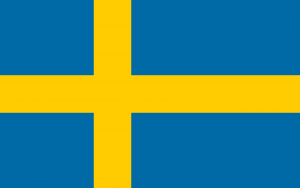Difference between revisions of "Language/Swedish/Grammar/Reflexive-pronouns/az"
m (Quick edit) |
m (Quick edit) |
||
| Line 79: | Line 79: | ||
<span gpt></span> <span model=gpt-3.5-turbo></span> <span temperature=0.7></span> | <span gpt></span> <span model=gpt-3.5-turbo></span> <span temperature=0.7></span> | ||
==Other lessons== | |||
* [[Language/Swedish/Grammar/Personal-pronouns/az|Personal pronouns]] | |||
* [[Language/Swedish/Grammar/0-to-A1-Course/az|0 to A1 Course]] | |||
{{Swedish-Page-Bottom}} | {{Swedish-Page-Bottom}} | ||
Revision as of 07:00, 6 June 2023
Reflexive Pronouns in Swedish
In this lesson, you will learn how to use reflexive pronouns in Swedish. Reflexive pronouns are used when the subject and object of a sentence are the same. For example, "I wash myself" or "She dresses herself."
Formation
In Swedish, reflexive pronouns are formed by adding "-sig" to the end of the personal pronoun. The following table shows the reflexive pronouns for each personal pronoun.
| Swedish | Pronunciation | North Azerbaijani |
|---|---|---|
| Jag (I) | /jɑːɡ sɪɡ/ | Mən (Mənim özümü) |
| Du (You) | /duː sɪɡ/ | Sən (Sənin özünü) |
| Han (He) | /hɑːn sɪɡ/ | O (Özünü) |
| Hon (She) | /hɔn sɪɡ/ | O (Özünü) |
| Den (It) | /deːn sɪɡ/ | O (Özünü) |
| Vi (We) | /viː sɪɡ/ | Biz (Bizim özümüzü) |
| Ni (You all) | /niː sɪɡ/ | Siz (Sizin özünüzü) |
| De (They) | /deː sɪɡ/ | Onlar (Özünə) |
Usage
Reflexive pronouns are used in a variety of situations in Swedish. Here are some common examples:
- To describe actions that someone does to themselves, such as "I wash myself" (Jag tvättar mig).
- To describe reciprocal actions, where two or more people are doing the same thing to each other, such as "They hugged each other" (De kramade varandra).
- To describe emotions or sensations that someone experiences, such as "She feels proud of herself" (Hon känner sig stolt).
- To describe actions that someone does without thinking, such as "He cut himself" (Han skar sig).
Word Order
In Swedish, reflexive pronouns usually come directly after the verb. For example:
- I wash myself = Jag tvättar mig
- She feels proud of herself = Hon känner sig stolt
However, in some cases, reflexive pronouns can come after a preposition, such as "med" (with) or "på" (on). For example:
- He put the hat on himself = Han satte på sig hatten.
- She went to the party with herself = Hon gick på festen med sig själv.
Conclusion
Reflexive pronouns are an important part of Swedish grammar. By understanding how to use them correctly, you can make your Swedish sentences more accurate and natural-sounding.
